The Hirota Tsumugi Blog
- 2020.02.25
- Yomitanzan Hanaori from Okinawa
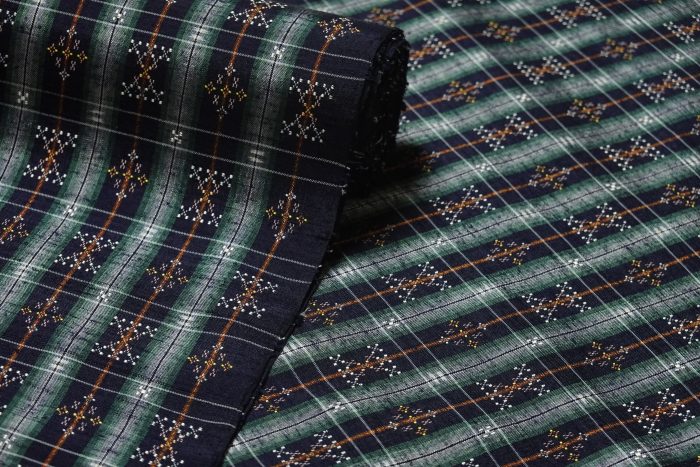
Hana-ori, a flower pattern created “through” weaving, is the technique well used in traditional Okinawa handcraft textiles. Yomitanzan hanaori is one of most beautiful and elaborate Hana-ori Okinawa textiles.
Hana-ori is a kind of float weave technique, in which a cluster of wrap yarns are floated over in a planned sequence and weft yarns pass over it, so that the unwoven, floated weft yarns create the pattern.
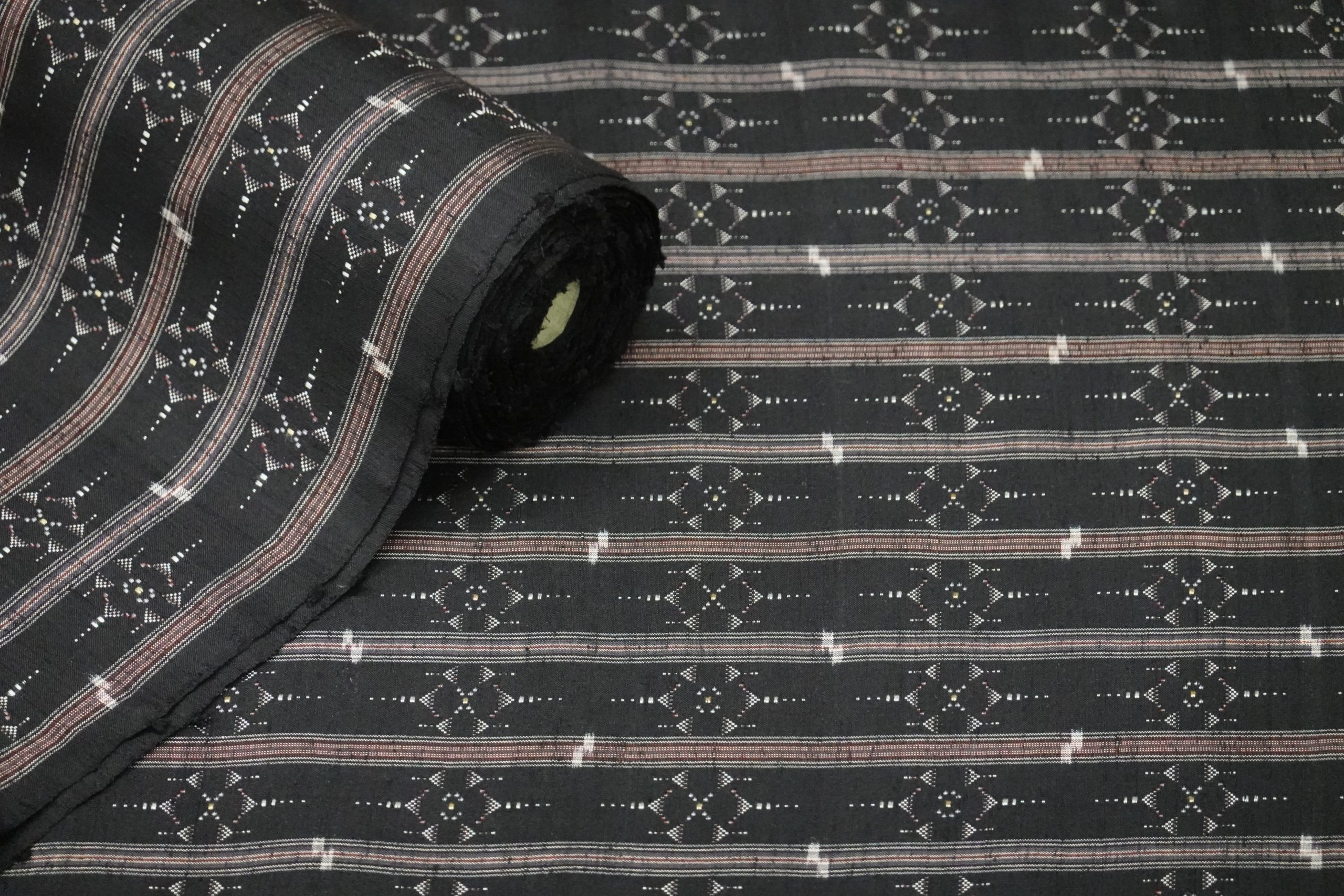
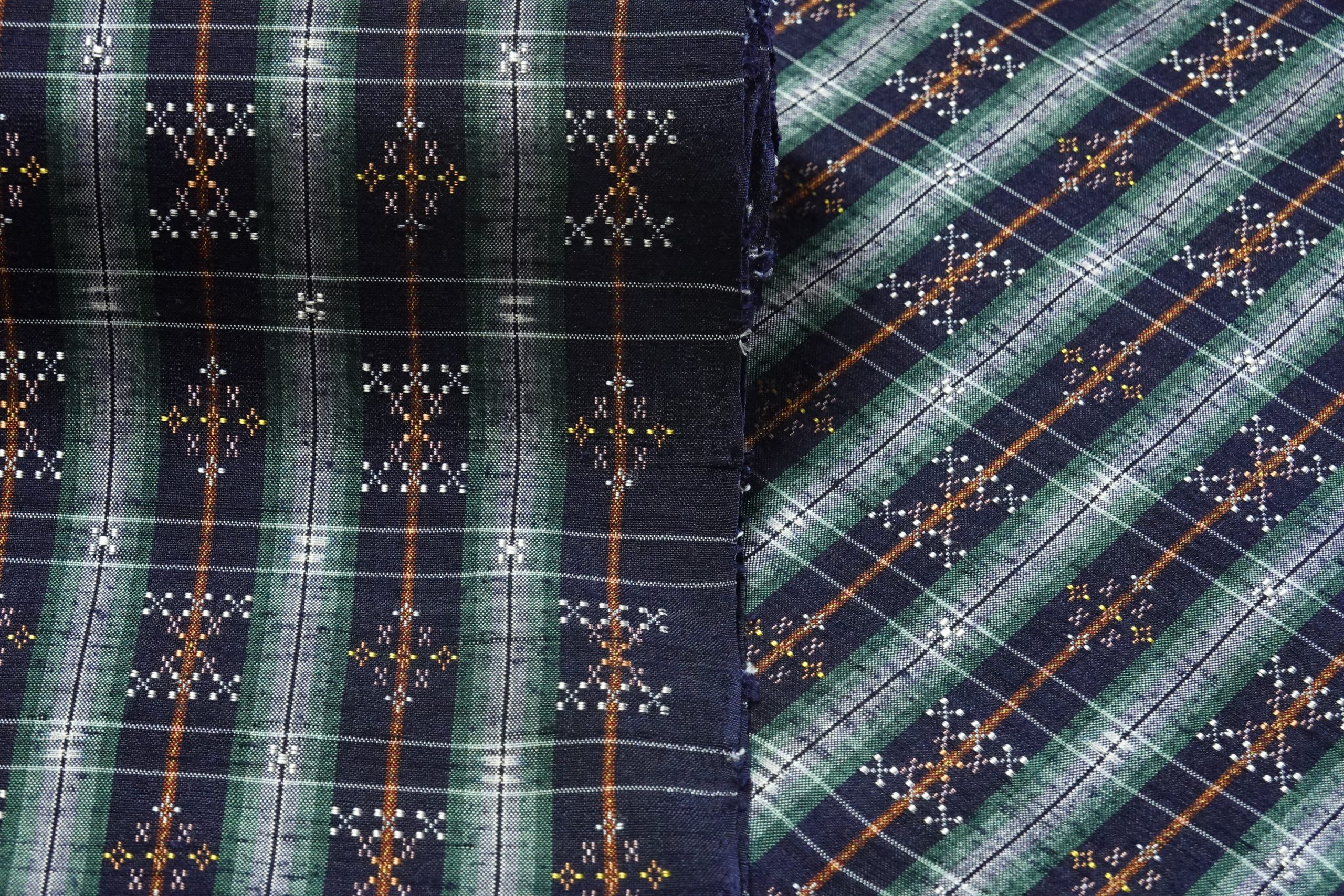
In order to create the pattern, any heddles are used at once on a handloom which are the foot-operation of rising up and down the heddles.
The float weave technique originally came from Asian continent, and had been developed in Okinawa over 600 years. In its history, it was only limited to be worn by the royalties of the Ryukyu dynasty.
Once the tradition cut off at the end of 19th century, but Yonamine Sada “与那嶺貞” (1909-2003) (a living national treasure) and the locals put their huge effort to revive the tradition after WW2.
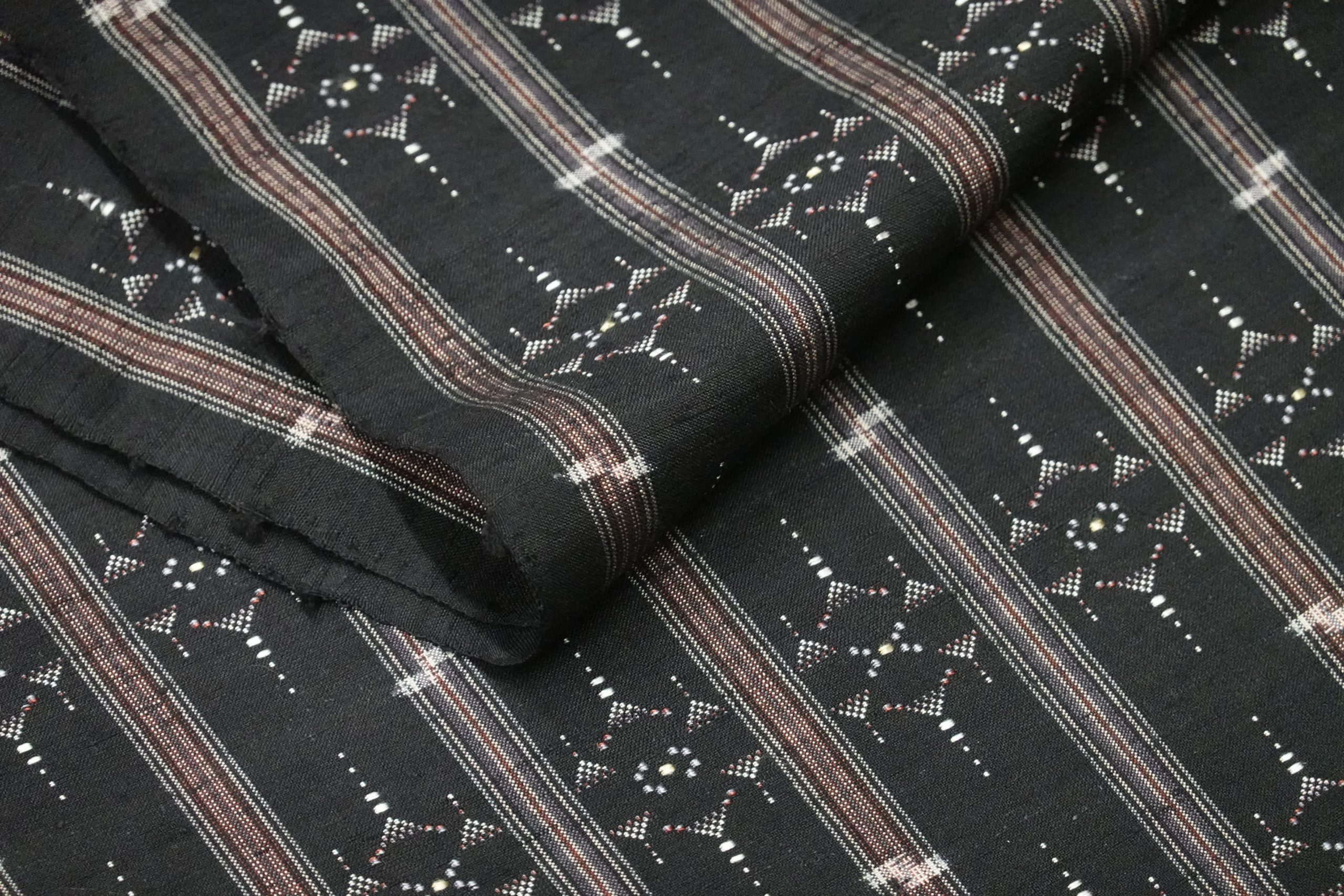
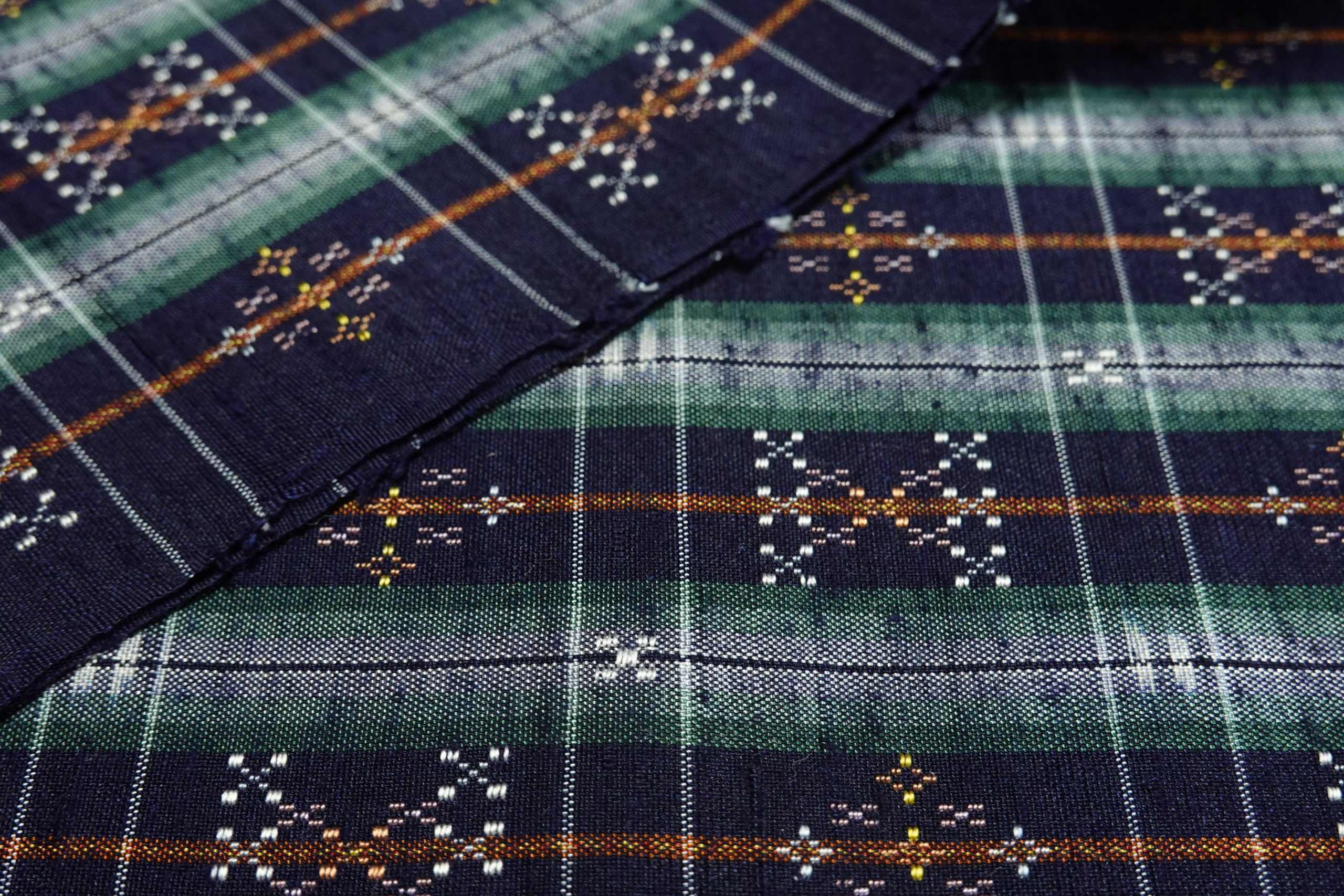
All colors use organic dyes made of local plants, and the traditional motifs are woven into.
There are 3 basic traditional motifs used in the pattern. “Jin-bana”, “Gajimaya-bana” and “Oji-bana”. Each has unique auspicious meaning.

Oji-bana : An open hand fan spreading out, wishing for family prosperity.
Gjimaya-bana : Wishing for longevity. There is an old custom in Okinawa that an pinwheel is gifted when one becomes 97 years old.
Jin-bana : The shape of an old coin, wishing for wealth.
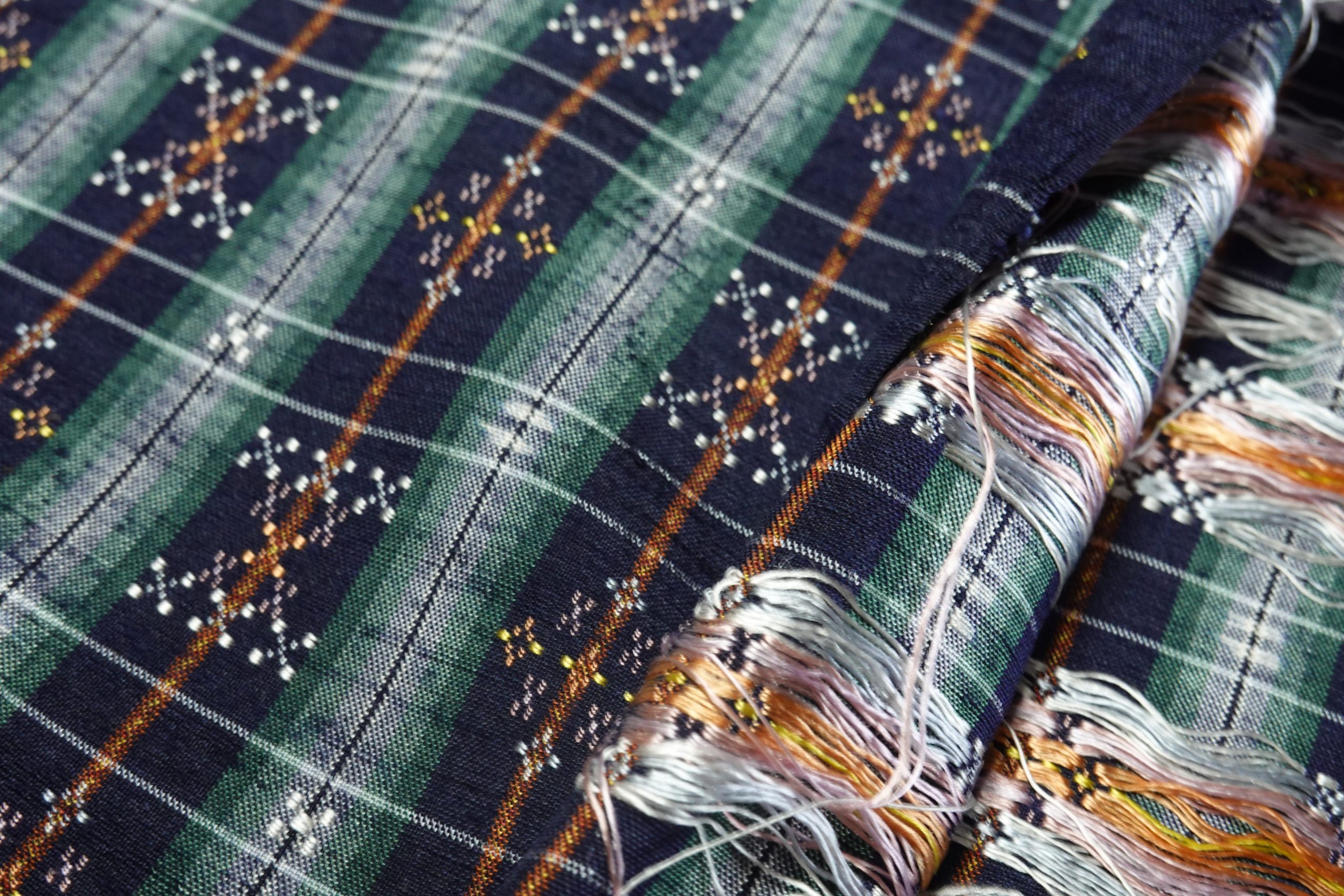
The back side is full of the weft yarns floated over.
The more complicate the pattern, the more heddles needed (sometimes 20 different heddles). Weaving the bolt takes at least 2 months.
Compared with other textile traditions, the crafting processes of Yomitanzan-hanaori fabric from dyeing to weaving are not sub-divided, and done mostly by one craft artisan.
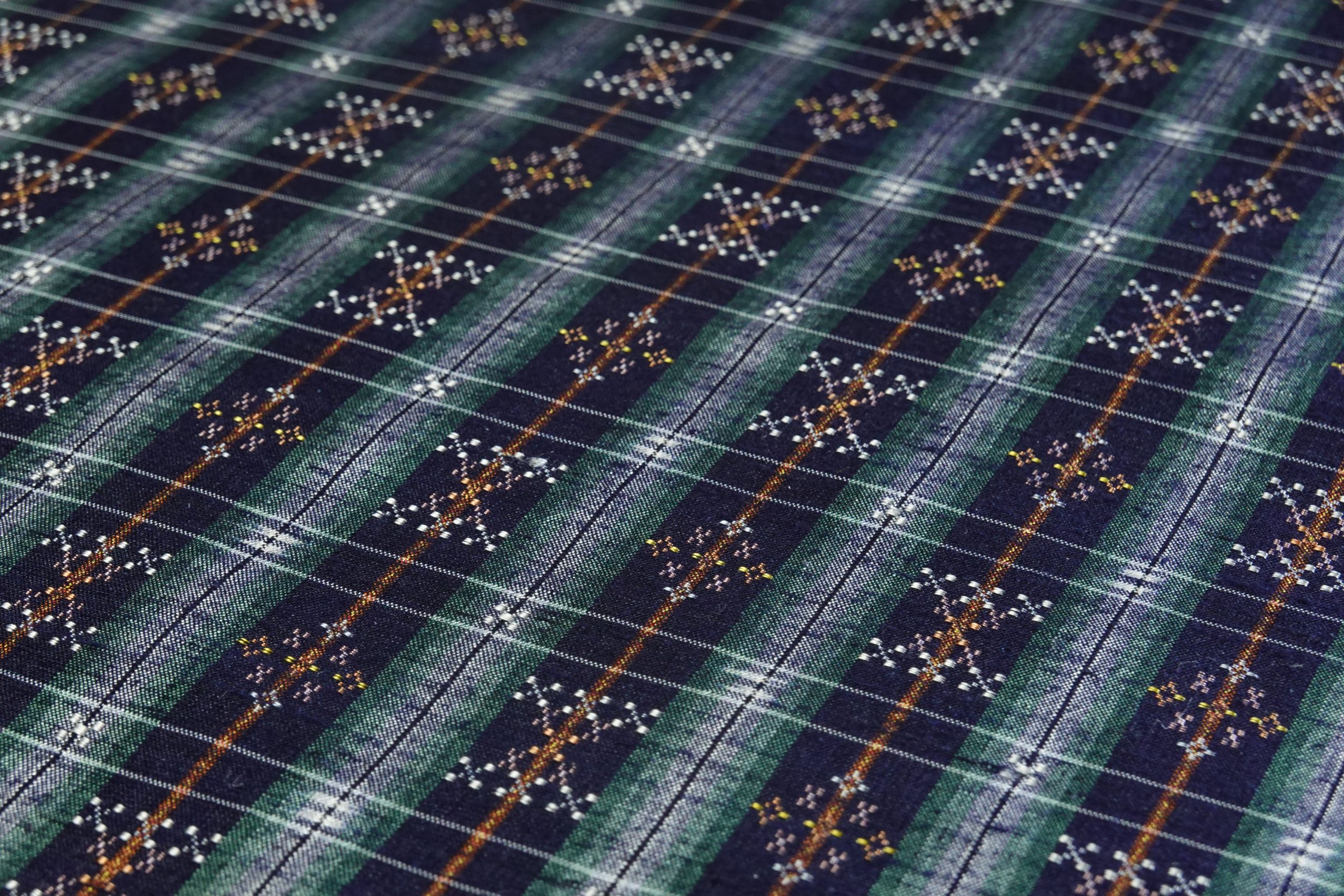
Looks like twinkling stars in the night sky.
No doubt Yomitanzan hanaori is one of the most exquisite hanaori textiles in Japan.